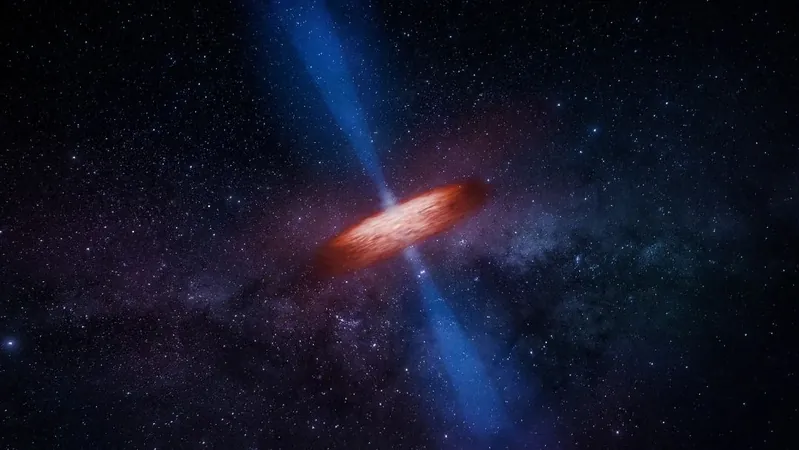
Astronomers Unlock Secrets of Black Hole Jets with Groundbreaking Event Horizon Telescope
2025-01-12
Author: Wei Ling
Introduction
Astronomers are diving deep into the enigmatic world of supermassive black holes, particularly drawn to the stunning jets they launch at nearly the speed of light. These colossal jets can extend for millions of light-years, and understanding the mechanics behind their creation and acceleration has long baffled scientists.
Groundbreaking Initiative
In a groundbreaking initiative led by Anne-Kathrin Baczko from Chalmers University of Technology in Sweden, a diverse team of astronomers is leveraging the capabilities of the Event Horizon Telescope (EHT)—an extraordinary assembly of eight ground-based radio telescopes that span across the planet. This international collaboration is pushing the limits of what we know about black holes and their jets.
Journey of Discovery
The journey began in 2017 when the EHT's unparalleled observational power allowed researchers to glimpse the dust-shrouded core of the distant galaxy NGC 1052, located approximately 60 million light-years away in the constellation Cetus. This galaxy is home to a supermassive black hole with a mass exceeding 150 million times that of our Sun, which emits bipolar jets visibly from both its eastern and western sides.
Challenges of NGC 1052
Baczko noted the challenges posed by NGC 1052: "It's faint, complex, and more challenging than any other source we've attempted so far. For such a faint and unknown target, we were uncertain if we'd obtain any data—but our strategic approach paid off."
Observational Findings
The team reported that the black hole region of NGC 1052 emits powerful radio waves at a one-millimeter wavelength, a domain of the electromagnetic spectrum that the EHT can exploit to produce remarkably sharp images. Their findings have been detailed in a recent paper published in *Astronomy & Astrophysics*.
Future Observation Plans
This black hole region also shines even more intensely at slightly longer wavelengths, making NGC 1052 an excellent candidate for future radio observations with upgraded facilities such as the next-generation Very Large Array in New Mexico, as well as an expanded version of the Event Horizon Telescope, which aims not just to take snapshots but also to record videos of black holes in action.
Comparative Size and Imaging Potential
Interestingly, the region surrounding the black hole, where these powerful jets are generated, has dimensions comparable to the area around the illustrious supermassive black hole M87*, famously captured by the EHT in 2019 as a fuzzy orange silhouette. Researchers confidently assert that the area is "easily big enough to be imaged with the EHT at full strength," paving the way for a deeper understanding of these cosmic phenomena.
Conclusion
As scientists continue to explore the mysteries of the universe, the findings from the Event Horizon Telescope promise to unlock further secrets of black holes and the universe's earliest epochs, redefining our comprehension of astrophysics and the delicate dance of forces that shape our cosmos. Stay tuned as researchers gear up for their next ambitious imaging missions that may reveal even more about the universe's most enigmatic objects!
 Brasil (PT)
Brasil (PT)
 Canada (EN)
Canada (EN)
 Chile (ES)
Chile (ES)
 Česko (CS)
Česko (CS)
 대한민국 (KO)
대한민국 (KO)
 España (ES)
España (ES)
 France (FR)
France (FR)
 Hong Kong (EN)
Hong Kong (EN)
 Italia (IT)
Italia (IT)
 日本 (JA)
日本 (JA)
 Magyarország (HU)
Magyarország (HU)
 Norge (NO)
Norge (NO)
 Polska (PL)
Polska (PL)
 Schweiz (DE)
Schweiz (DE)
 Singapore (EN)
Singapore (EN)
 Sverige (SV)
Sverige (SV)
 Suomi (FI)
Suomi (FI)
 Türkiye (TR)
Türkiye (TR)
 الإمارات العربية المتحدة (AR)
الإمارات العربية المتحدة (AR)